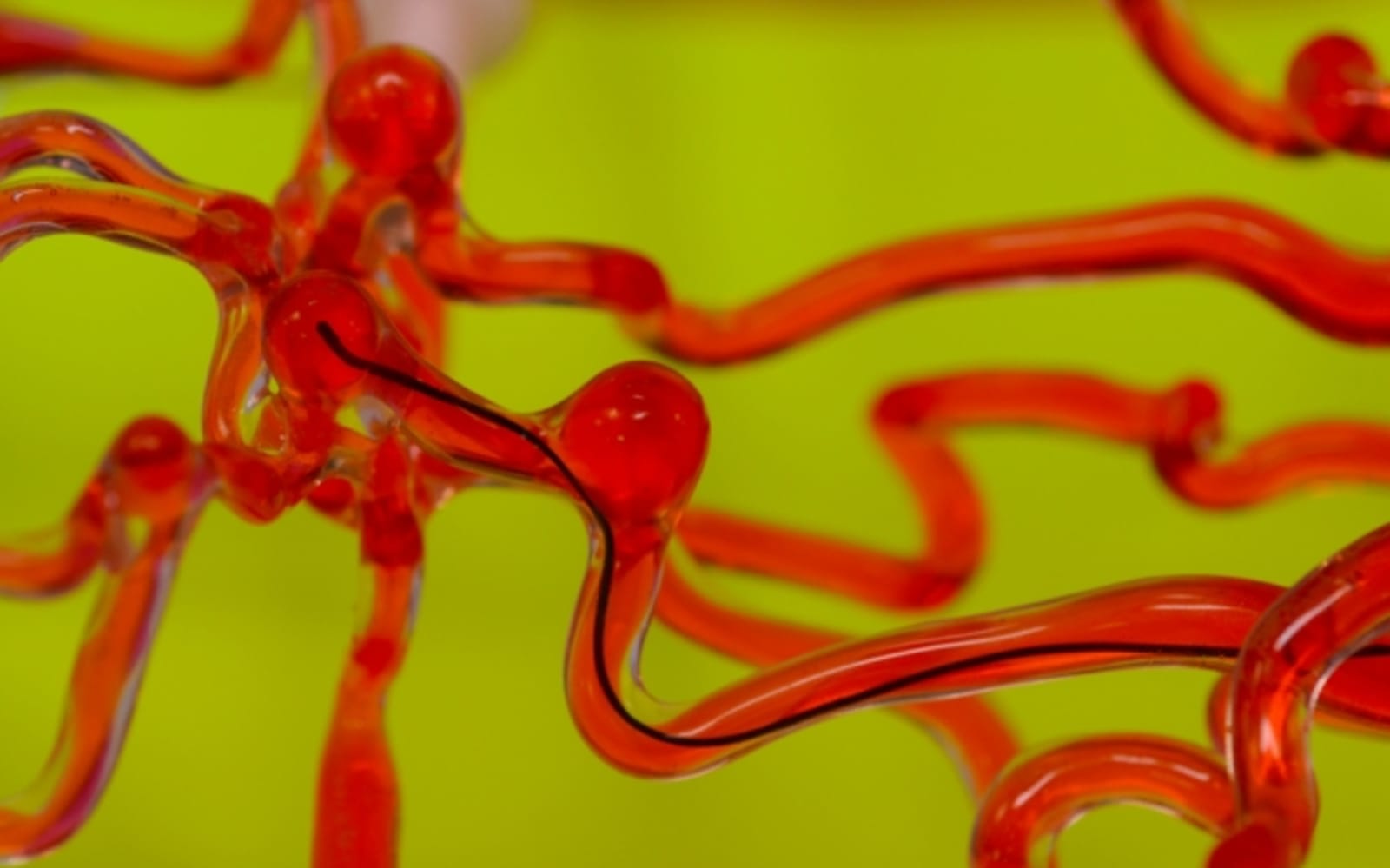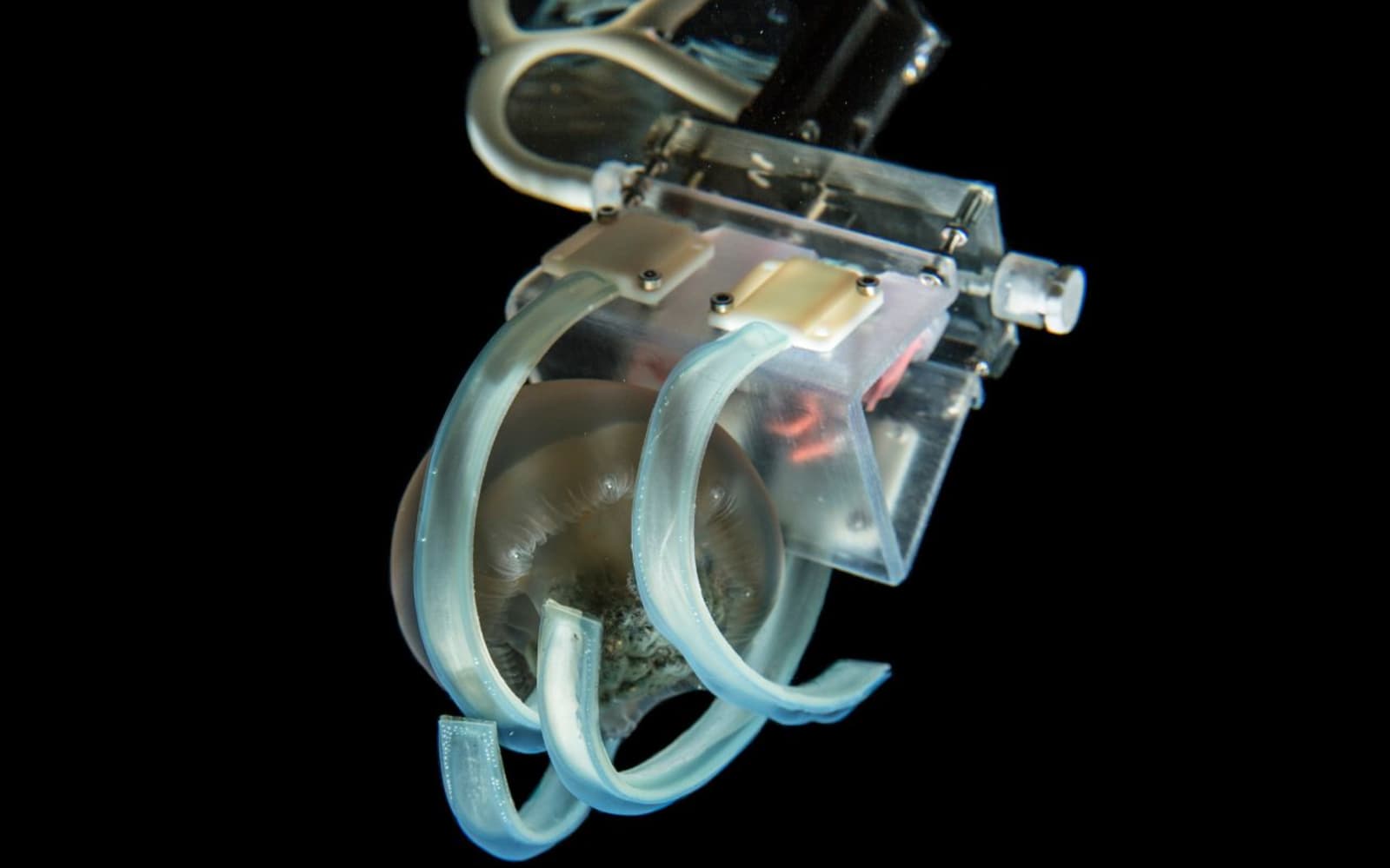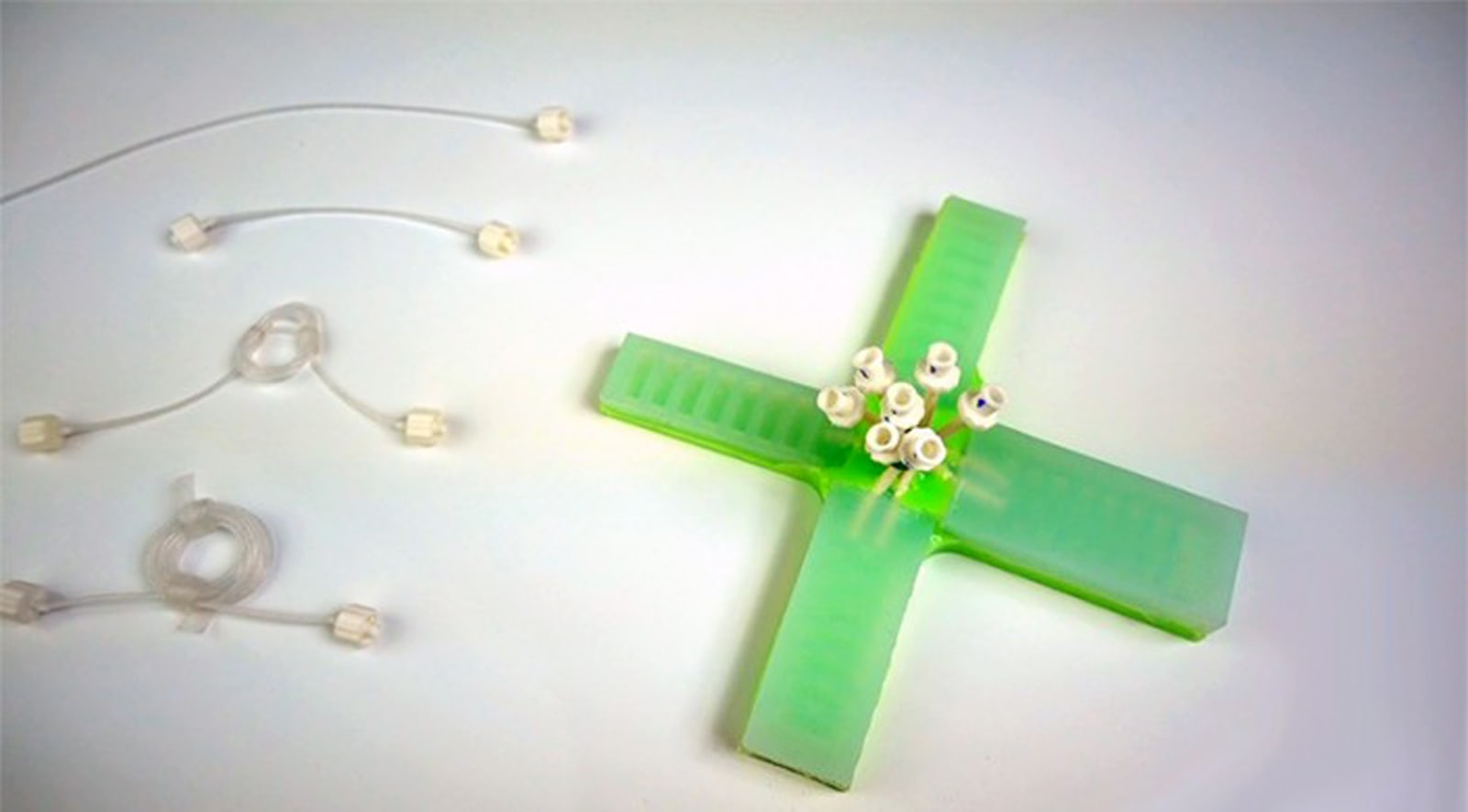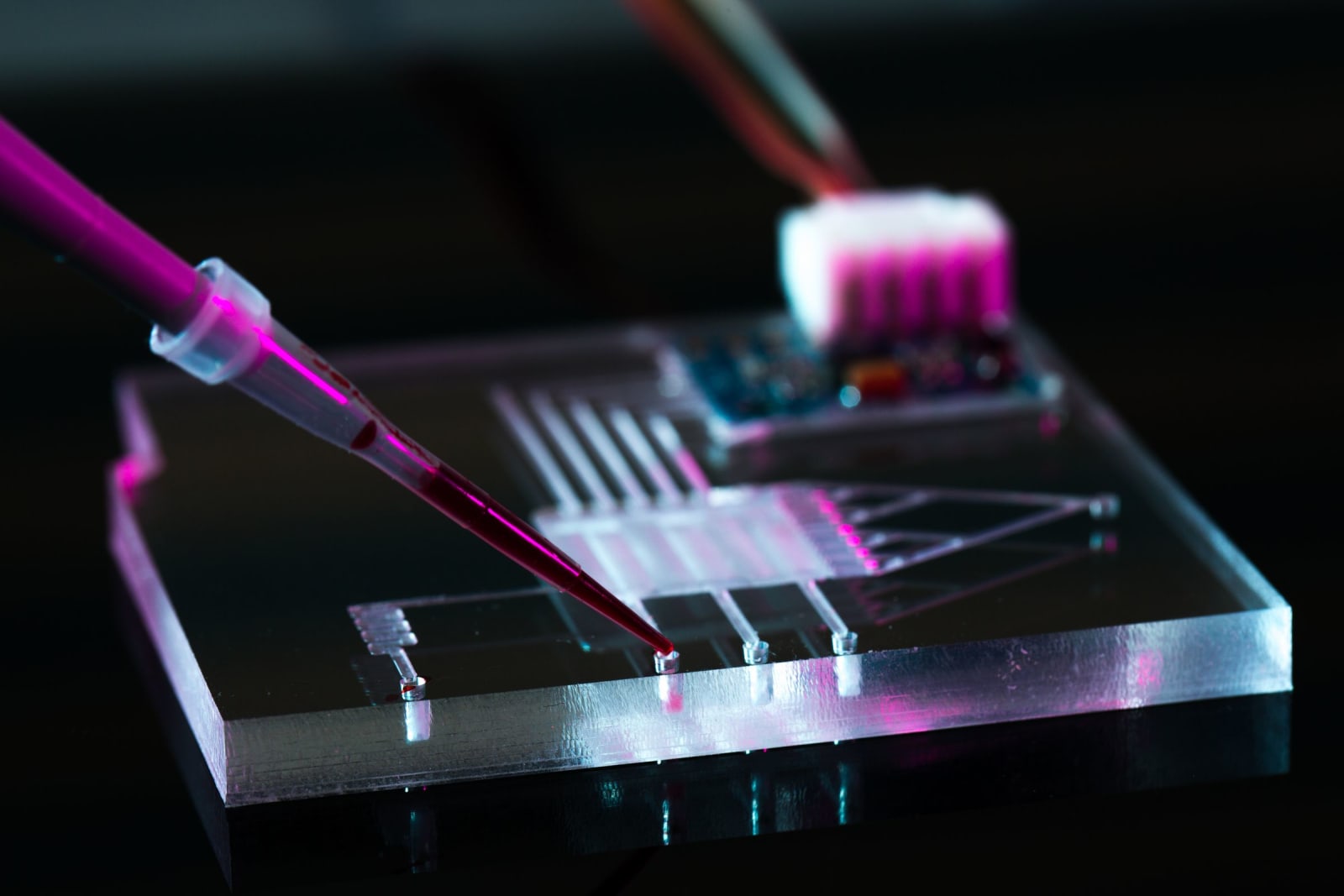Tag Archives: soft robot
Researchers built a breakdancing, light-powered hydrogel robot
New 3D printing technique could make shapeshifting robots more practical
Soft robots can now run like cheetahs and swim like marlins
Scientists can 3D print insect-like robots in minutes
MIT’s thread-like robot can slip through blood vessels in your brain
 MIT engineers created a thread-like robot that can glide through the brain's blood vessels and could deliver clot-reducing drugs to treat strokes or aneurysms. The robotic thread could offer an alternative to open brain surgery, and it could be contr...
MIT engineers created a thread-like robot that can glide through the brain's blood vessels and could deliver clot-reducing drugs to treat strokes or aneurysms. The robotic thread could offer an alternative to open brain surgery, and it could be contr...
Harvard’s noodly robot fingers are great at grabbing jellyfish
 Robots can be a bit heavy-handed. Their forceful grip might not be a problem when they're moving boxes in a warehouse, but they can damage fragile marine creatures like jellyfish. Researchers may have a solution. They've created a robotic hand with a...
Robots can be a bit heavy-handed. Their forceful grip might not be a problem when they're moving boxes in a warehouse, but they can damage fragile marine creatures like jellyfish. Researchers may have a solution. They've created a robotic hand with a...
Simpler, air-powered soft robots could help with space exploration
 Soft robots promise a kinder, gentler approach to automation, but they're frequently hamstrung by complexity, costs and the need for wires. Thankfully, Harvard researchers have found a way to simplify matters. They've developed a softrobot driven b...
Soft robots promise a kinder, gentler approach to automation, but they're frequently hamstrung by complexity, costs and the need for wires. Thankfully, Harvard researchers have found a way to simplify matters. They've developed a softrobot driven b...
Self-healing 3D-printed gel has a future in robots and medicine
 Robots might be a little more appealing -- and more practical -- if they're not made of hard, cold metal or plastic, but of a softer material. Researcher at Brown University believe they've developed a new material that could be ideal for "soft robot...
Robots might be a little more appealing -- and more practical -- if they're not made of hard, cold metal or plastic, but of a softer material. Researcher at Brown University believe they've developed a new material that could be ideal for "soft robot...
DARPA’s low-cost silicone robot cloaks like a chameleon, treks like a snail (video)
Remember those colorful sticky hands that you used to buy for a quarter from grocery store vending machines? Yeah, this is kind of like that -- except that it's a freaking robot. DARPA is currently working to develop low-cost silicone robots that use both air and fluid to control movement, color and temperature. In the following video, you can see one of these soft contraptions as it journeys onto a bed of rocks and then uses colored liquid to blend into its surroundings. Don't expect this glorious sticky hand to break any land speed records, however; the silicone bot can travel approximately 40 meters per hour, or up to 67 meters per hour without the fluid. (Even the 30 second video, which goes at a snail's pace, has been sped up five fold.)
The current demonstration implements a tethered solution as the robot's source of power, pumps, gasses and liquids, but future developments may allow for a self-contained system. Further, rather than improving the robot's speed, its developers will instead focus on its flexibility as a means for navigating within tight spaces. Be sure to peep the video below, and we think you'll agree that DARPA's creation easily puts those sticky hands to shame.
Continue reading DARPA's low-cost silicone robot cloaks like a chameleon, treks like a snail (video)
Filed under: Robots
DARPA's low-cost silicone robot cloaks like a chameleon, treks like a snail (video) originally appeared on Engadget on Fri, 17 Aug 2012 01:15:00 EDT. Please see our terms for use of feeds.
Permalink | DARPAtv (YouTube) | Email this | Comments
DARPAtv (YouTube) | Email this | Comments 